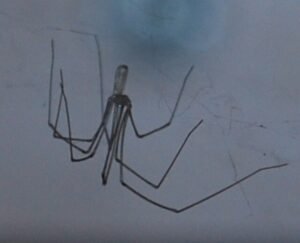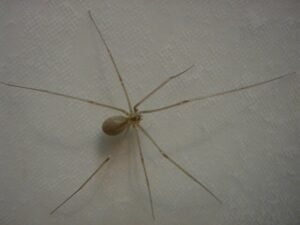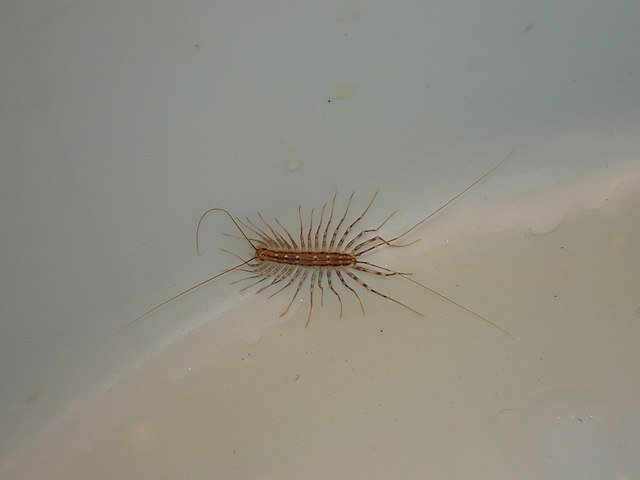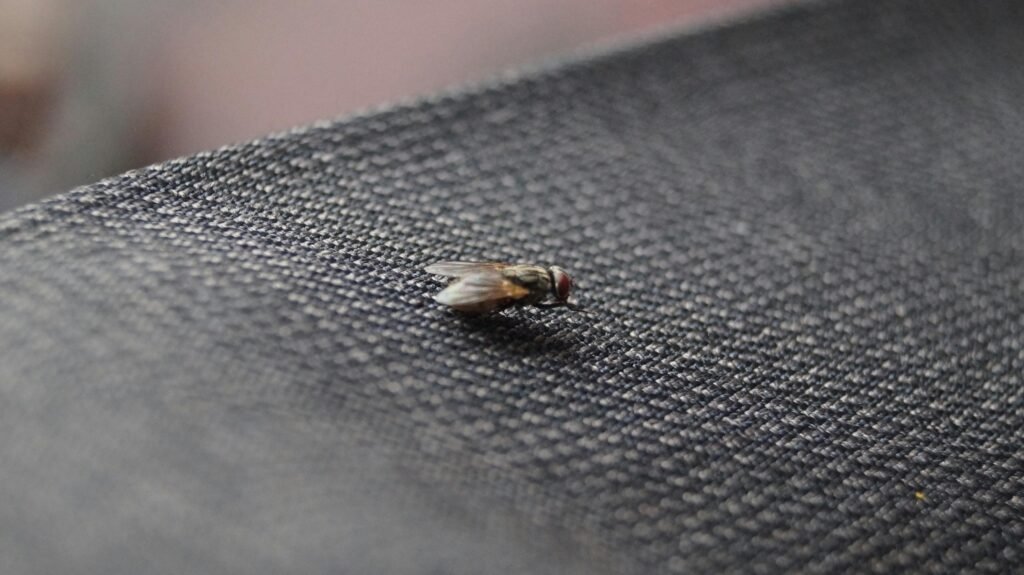Cellar Spiders (Pholcidae): Identification, Behavior & Control
 The Cellar Spiders (Pholcidae), often nicknamed “daddy long-legs spiders,” are among the most familiar arachnids in homes and basements worldwide. Their long, delicate legs and habit of hanging upside down in messy webs make them easy to spot—but also the subject of countless myths.
The Cellar Spiders (Pholcidae), often nicknamed “daddy long-legs spiders,” are among the most familiar arachnids in homes and basements worldwide. Their long, delicate legs and habit of hanging upside down in messy webs make them easy to spot—but also the subject of countless myths.
Unlike fabric-destroying pests like the Carpet Beetle (Anthrenus spp.) or pantry invaders such as the Drugstore Beetle (Stegobium paniceum), cellar spiders are primarily nuisance pests. They do not feed on household items; instead, they prey on small insects such as Mosquitoes, Fungus Gnats, Fruit Flies, and even other spiders. This makes them useful predators indoors, though their persistent web-building often earns them eviction.
This guide explores their identification, biology, behavior, risks, and control methods, with comparisons to other common pests like Silverfish, Firebrats, and House Centipedes.
Identification
Size: Small-bodied, usually 2–10 mm in body length.
Legs: Extremely long and thin, up to 6 times the body length.
Color: Pale gray, brown, or yellowish.
Webs: Irregular, messy webs built in corners, ceilings, and basements.
Behavior: Known for vibrating rapidly in their webs when threatened, a defensive tactic that makes them harder to spot.
Common Confusions
Harvestmen (Opiliones): Often called “daddy long-legs” but not spiders; they lack venom glands and silk.
Cellar Spiders (Pholcidae): True spiders with venom (harmless to humans) and silk production.
Biology and Lifecycle
 Eggs: Encased in silk sacs, often carried by the female in her jaws until hatching.
Eggs: Encased in silk sacs, often carried by the female in her jaws until hatching.Spiderlings: Stay near the mother’s web before dispersing.
Maturity: Reached in a few months under indoor conditions.
Lifespan: Adults can live up to 2 years in protected environments.
Reproduction: Multiple egg sacs produced per female, ensuring steady populations indoors.
Ecology and Distribution
Global presence: Found worldwide, from Europe and North America to Asia and Australia.
Habitats indoors: Basements, garages, attics, crawl spaces, and other dark, undisturbed areas.
Habitats outdoors: Beneath rocks, logs, sheds, and leaf litter.
Preferred conditions: Damp, dark spaces with an abundant food supply (flying insects).
Cellar spiders are often associated with human dwellings, thriving wherever insect prey is plentiful.
Risks and Misconceptions
Myth: Cellar spiders are “the most venomous spiders but their fangs can’t pierce skin.”
Truth: Studies show their venom is mild and not medically significant.
Bites: Extremely rare and usually harmless.
Nuisance: Their messy webs are the primary complaint.
Beneficial role: Feed on Mosquitoes, Fungus Gnats, and even other spiders, making them natural indoor pest managers.
Signs of Infestation
Clusters of messy webs in corners and ceilings.
Presence of long-legged spiders hanging upside down.
Higher numbers in damp areas like basements and garages.
Increased sightings where prey insects (e.g., Fruit Flies) are abundant.
Household and Garden Control
Cleaning: Regular vacuuming and dusting removes webs and eggs.
Exclusion: Seal cracks and repair screens to reduce insect entry (less food = fewer spiders).
Humidity reduction: Use dehumidifiers in basements to make conditions less favorable.
Lighting control: Reducing outdoor lighting limits the attraction of flying prey like Moths and Mosquitoes.
Non-chemical approach: Physical removal is typically sufficient.
Professional and Long-Term Control
IPM (Integrated Pest Management): Focuses on managing insect prey rather than targeting spiders directly.
Pesticides: Rarely necessary indoors; should only be considered if infestations are severe.
Monitoring: Professionals may inspect for underlying insect issues—such as Earwigs, Silverfish, or Firebrats—that support spider populations.
Sanitation + Exclusion: The most sustainable approach.
FAQs About Cellar Spiders
Q: Do cellar spiders bite humans?
A: Bites are extremely rare, and their venom is harmless. They are not considered a threat.
Q: Are cellar spiders the same as daddy long-legs?
A: The term “daddy long-legs” is confusing. It may refer to cellar spiders (Pholcidae), harvestmen (Opiliones), or even crane flies (Tipulidae). Only cellar spiders are true spiders.
Q: Why do cellar spiders shake in their webs?
A: Vibrating rapidly makes them harder for predators to target and can also confuse prey.
Q: Are cellar spiders good for pest control?
A: Yes, they consume many small insects like Mosquitoes, Fruit Flies, and Fungus Gnats, reducing nuisance pests indoors.
Q: How long do cellar spiders live?
A: Up to 2 years indoors, which is relatively long compared to other household spiders.
Final Thoughts
The Cellar Spider (Pholcidae) is a perfect case of a pest defined more by perception than real threat. Their long, spindly legs and habit of filling corners with webs make them look intimidating, yet they are harmless and even beneficial.
While fabric pests like the Carpet Beetle (Anthrenus spp.) or food invaders such as the Cigarette Beetle (Lasioderma serricorne) cause real economic damage, cellar spiders simply create a messy appearance. On the other hand, their appetite for nuisance insects like Fruit Flies, Mosquitoes, and Fungus Gnats can help households keep small flying pests in check.
For homeowners, the key lies in regular cleaning and exclusion. Removing webs, sealing cracks, and reducing humidity will keep populations under control without the need for chemicals. For professionals, control is rarely necessary unless cellar spiders point to a bigger underlying insect problem.
Ultimately, cellar spiders are not a danger but a reminder that ecosystems exist even inside our basements and corners. They are house guests that, while unsightly, are quietly helping with pest control indoors.
Disclaimer
This article is for informational purposes only. Pest control laws and approved chemicals vary by country. For best results and legal safety, we strongly recommend contacting a licensed pest control professional in your local area. Always make sure that the pest control technician is properly certified or licensed, depending on your country’s regulations. It’s important to confirm that they only use approved products and apply them exactly as instructed on the product label. In most places in Europe, UK, or USA, following label directions is not just best practice—it’s the law.
Author
Nasos Iliopoulos
MSc Agronomist & Certified Pest Control Expert
Scientific Director, Advance Services (Athens, Greece)
Licensed Pest Control Business – Ministry of Rural Development & Food (GR)
References
Wikipedia – Cellar Spiders (Pholcidae)
Penn State Extension –Longbodied Cellar Spider

 Eggs: Encased in silk sacs, often carried by the female in her jaws until hatching.
Eggs: Encased in silk sacs, often carried by the female in her jaws until hatching.
